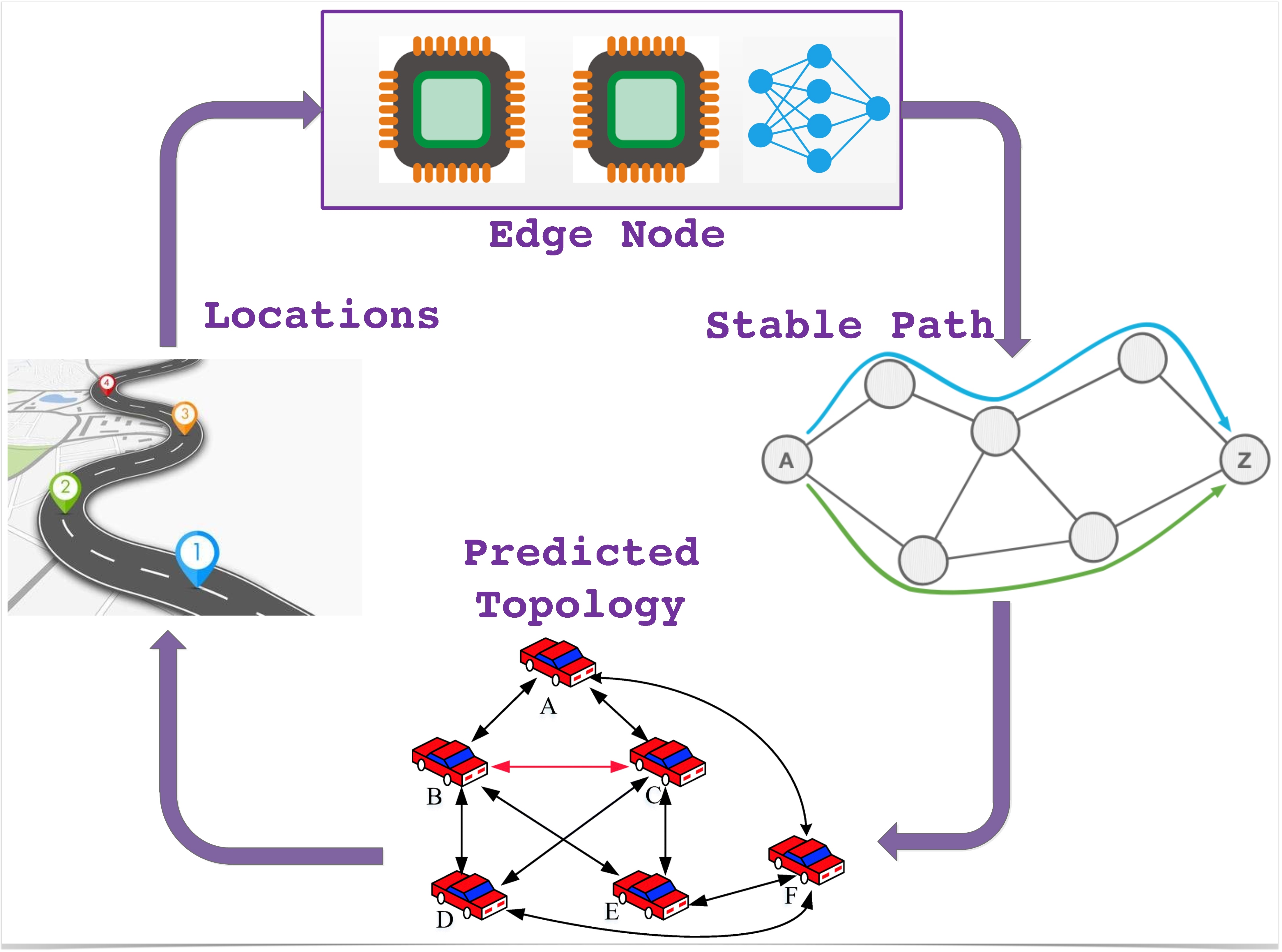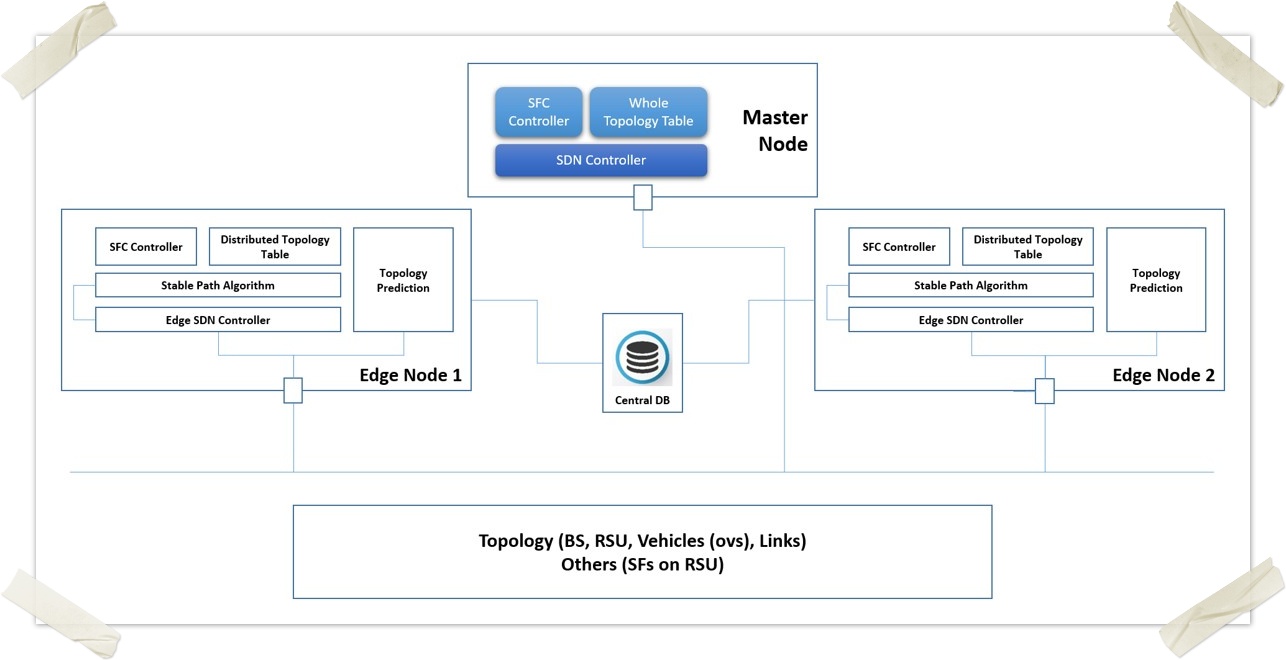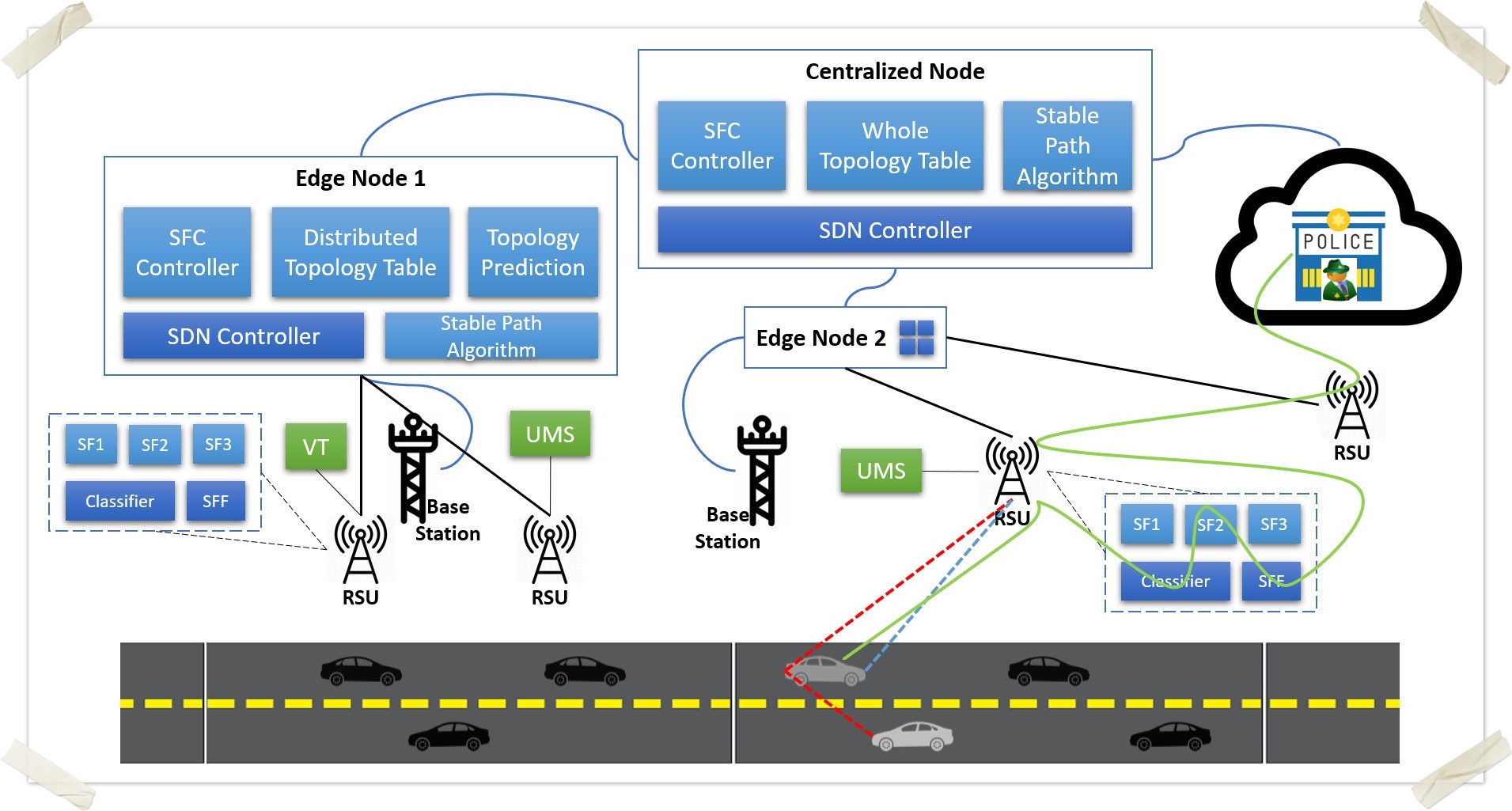Edge Computing-based Stable Topology Prediction for Vehicular Networks
Use Case Details:
Attributes | Description | Informational |
|---|---|---|
| Type | New | |
| Industry sector | Area: SDN & NFV | ATTO RESEARCH focuses on the problems related to networking and software technology for a better connection. It has created a technology that allows to build IT infrastructure, and aims to grow into a ‘Software Defined Infrastructure’ company. |
| Business drivers | In order to enable various applications such as autonomous driving through VANETs, stable vehicular network is essential. Edge cloud proves to be a promising infrastructure where a stable network topology can be predicted locally in order to improve the network performance by providing intensive calculation for vehicles in the adjacent roads. Thus, converging the two concepts of edge computing and topology prediction can provide a strong use-case for the vehicular networks such as proactive path stabilization. | The position-based Efficient Routing Algorithm is able to provide a stable path by using the predicted future position for the nearby vehicles. The information can also be made available to the adjacent road resulting to be useful to provide a stable topology on the road tracks. |
| Use cases |
| The topology prediction performed at the edge cloud will provide real-time network topology as well as a stable routing path in IoV. |
| Business cost (initial build cost target objective) | The minimal configuration is three servers in total:
| |
| Scale & Type | 3 (x86 server) | The physical machines are used for different purposes such as Master, Edge and Database nodes. 1st server will be used as a Master and Database node. The remaining two physical servers will be used as two different edge nodes for computing. |
| Nodes (virtual) |
| Our system has three basic nodes. Master node being the one to manage the other nodes helps out in scaling up the number of edge nodes and applications on them. Edge nodes have the prediction models which provide the network topology in IoV. Database node contains the information of each edge node accessible to the Master node via which Master node can also view the overall network topology in IoV for different purposes. |
| Applications | Applications for autonomous vehicles such as topology and location prediction on edge clouds. | These applications (being latency sensitive) can be extended to any type of business use-cases. |
| Infrastructure orchestration |
| For orchestration purpose, we will use OSM (Open Source MANO). The infrastructure to be setup for the proposal is done by generating configurations in the OSM platform that will orchestrate resources via the OpenStack (cloud provider). We also integrate the an ONOS (SDN controller) for the purpose of networking among the VMs. These VMs will act as our edge servers. We will setup the edge locations on our local physical servers and provide with the performance test results. |
| Workload type | Virtual-machines/Containers | We will use virtual-machines at the initial stage of development. |
| Additional details | Introduced intelligence at the edge. Reducing backhaul due to edge computing. | PPT has been attached as a proposal statement. |
| Summary/ Overview | Due to recent advancement in networks, IoV has a major role to play and is critical to performance. To this end, we introduce machine learning mechanisms integrated at the edge cloud as a proposal. As it is a known fact that the vehicles at the edge are directly connected to the Radio Station Units/Base Stations (RSU/BS) and placing such application/software packages at the edge can significantly enhance the performance in the IoV domain. Further, the extended version of Kalman Filter is proposed to predict the network topological locations. The inference engine used for predicting the vehicular locations and further forming them into predicted topology proves to provide a stable path for the vehicles to communicate on the provided flow-based channels. Overall, the solution and architecture are flexible in nature which further allow the support of multiple use cases in 5G. |
|
Motivation:
Motivational aspects are:
- The topology in a vehicular network is updated and retrieved frequently
- This causes path instability
- Vehicular networks are wireless in nature
- However, Software-defined networking (SDN) is originally designed for wired networks
- Leads to the need for topology stability in vehicular networks
To this end, we introduce:
- Computation at the Edge
- Topology prediction to proactively stabilize the paths in vehicular network
QoS-based multi-channel Scenario:
The architectural view of our system is as follows:
QoS-based multi-channel Scenario:
| Committer | Company | Email (Contact) | Profiles | Picture |
|---|---|---|---|---|
| Asif Mehmood | Jeju National University | malikasifmahmoodawan@gmail.com | ||
| Muhammad Ali Jibran | --- | alijibran35@gmail.com | ||
| Afaq Muhammad | Jeju National University | afaq@jejunu.ac.kr | ||
| Wang-Cheol Song | Jeju National University | philo@jejunu.ac.kr | ||
| Taekyung Lee | ATTO Research | taekyung.lee@atto-research.com |
Help Us Improve the Wiki
This Wiki is owned by the Akraino Community. Contributions are always welcomed to help make it better!
In upper right, select Log In. You will need a Linux Foundation Account (can be created at https://identity.linuxfoundation.org/) to log-in. For a Wiki tutorial, please see Confluence Overview. Thank you!
Recent space activity
Links
- Akraino Website
- Documentation
- Community Meetings & Calendar
- Join LF Edge
- Network Cloud Family Seed Code (Network Cloud Blueprint)


